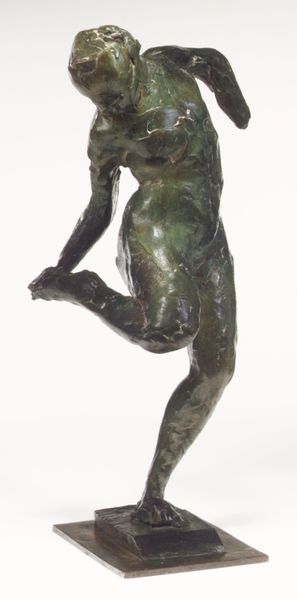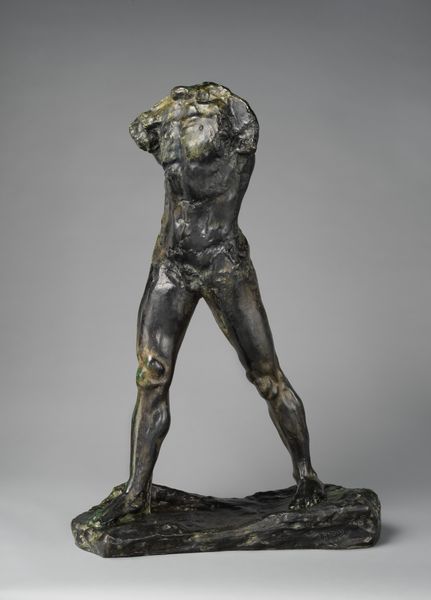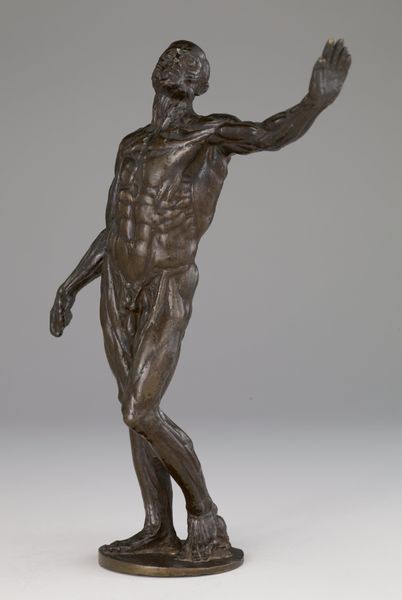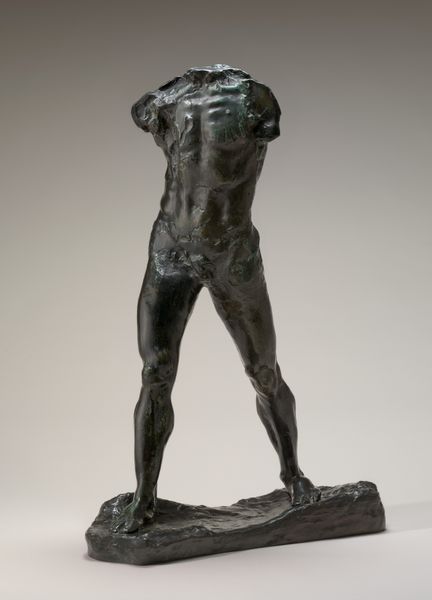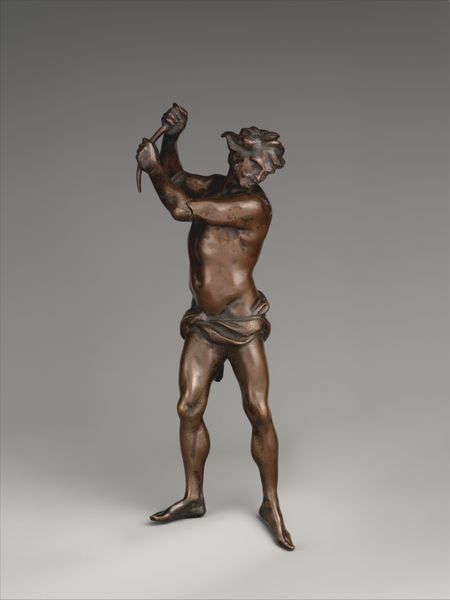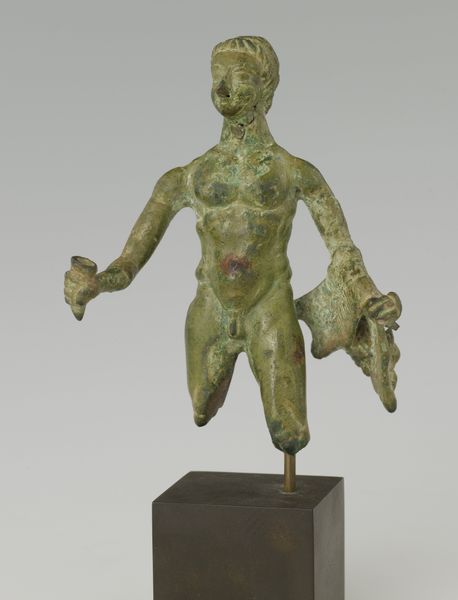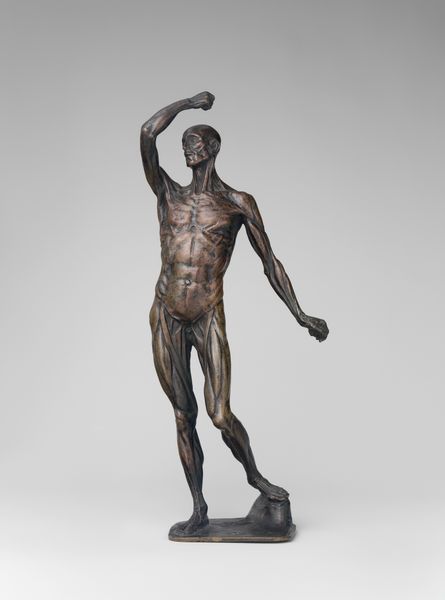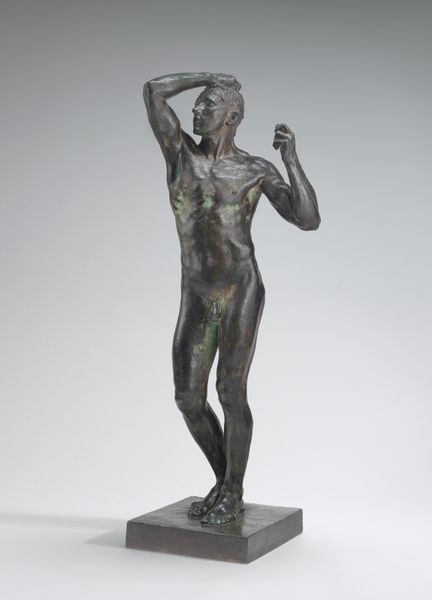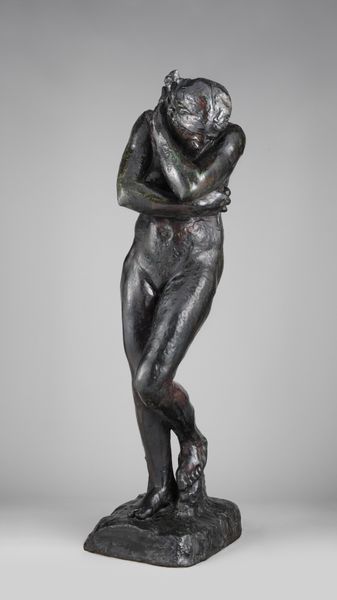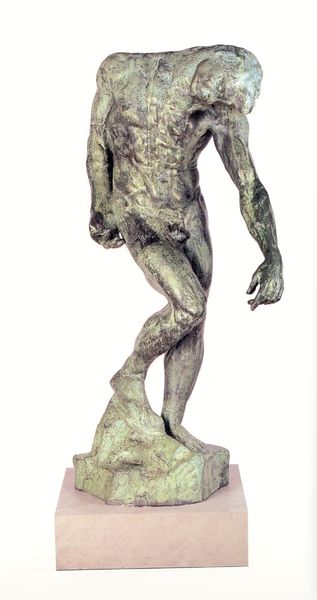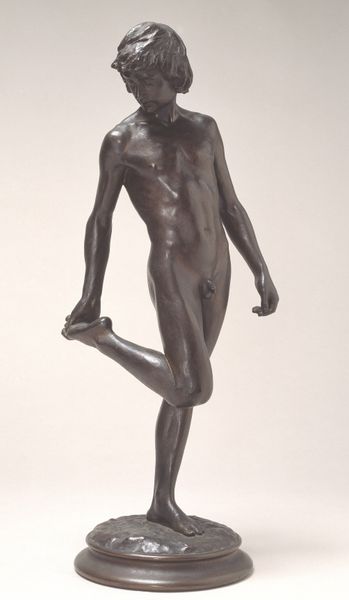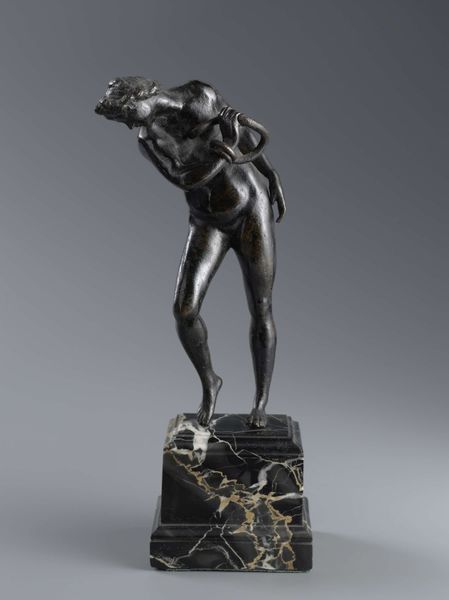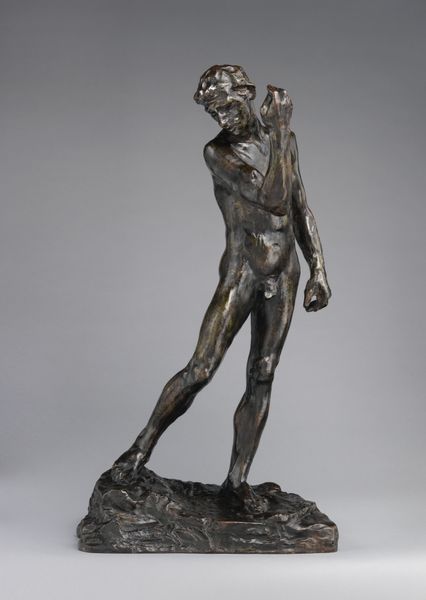
Dimensions: H. 84.1 cm (33 1/8 in.)
Copyright: Public Domain
Editor: We're looking at Rodin's "The Walking Man," a bronze sculpture created before 1917. It’s striking how unfinished it appears, almost fragmented, yet possesses an incredible sense of movement and purpose. What do you see in this piece? Curator: Primarily, I observe the emphasis on form and surface. The rough, textured bronze is not merely representational, but actively contributes to the expressive power of the figure. Note the asymmetry, the way the light catches on the varied planes of the body, creating a dynamic play of shadow and illumination. Editor: It's definitely not smooth and idealized like earlier sculptures. I'm intrigued by the lack of head and arms. Is that just Rodin being different? Curator: Consider the truncation as a deliberate strategy. By removing the head and arms, Rodin compels us to focus on the core, the torso and legs, which are rendered with such intensity and anatomical precision. The lack of conventional attributes forces a reading centered purely on movement and the human form itself. How do the individual elements combine? Editor: I see the way the legs are posed creates a feeling of determined striding forward. It looks incredibly balanced, though it seems precarious because of its lack of arms. Curator: Precisely. This sculpture privileges the lower body. The upper body's absence underscores its dependence on its legs and feet; Rodin seems to ask what the bare minimum of physical components would have to be presented to still signal strength, direction, purpose, and even motion. The structural economy of the piece contributes greatly to its effectiveness. Editor: So, it’s less about what’s missing and more about what’s present and emphasized. I see the effectiveness of Rodin's composition choices more clearly now. Curator: Yes, the visual elements present work together. The overall effect is that "The Walking Man" transcends mere physical representation; it embodies a powerful sense of forward momentum and human will through masterful manipulation of form.
Comments
No comments
Be the first to comment and join the conversation on the ultimate creative platform.
